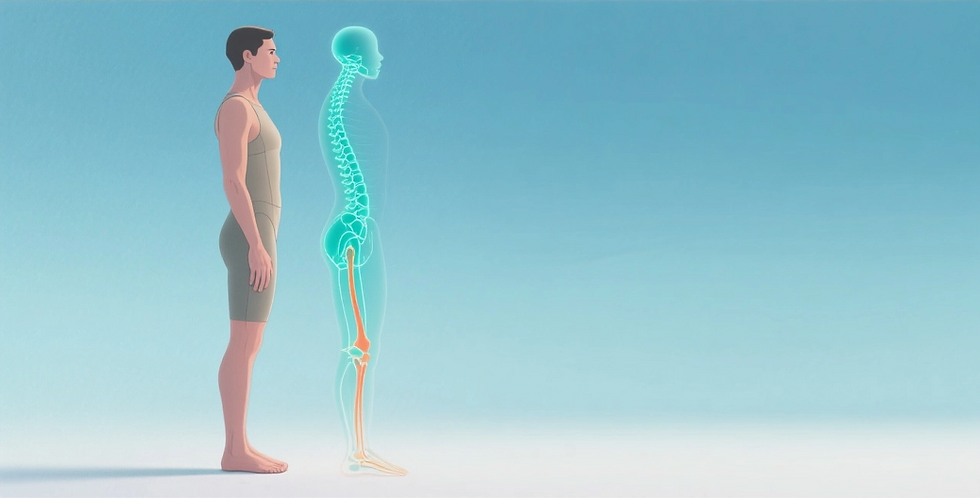Uncovering the Healing Power of Cardiac Coherence: How to Sync Your Heart and Brain for Optimal Health and Wellness
- Luc

- Jan 1
- 4 min read
Updated: Feb 3

What Is Cardiac Coherence?
Cardiac coherence is a measurable physiological state where your heart rate variability (HRV)—the natural variation in time between heartbeats—becomes smooth and rhythmic. This synchronization between your heart and brain has profound effects on your body, helping you manage stress, improve focus, and boost overall health.
According to research published in Frontiers in Psychology, cardiac coherence reflects the harmonious communication between the heart and brain. This state is not only beneficial for emotional regulation but also plays a critical role in improving cognitive function and building resilience to life’s challenges.
The Science Behind Cardiac Coherence
Your heart and brain are in constant communication through the autonomic nervous system. When you’re stressed, this communication becomes chaotic, leading to irregular heart rhythms and a cascade of negative effects on your body. However, when you achieve cardiac coherence, your heart rhythm becomes smooth and consistent, sending positive signals to your brain.
Positive Emotions and Heart-Brain Connection
The study highlights that positive emotions, such as gratitude, compassion, or appreciation, naturally create a sine wave-like pattern in heart rhythms. This pattern is associated with increased coherence, which enhances your ability to think clearly, regulate emotions, and respond calmly to stress.
Trauma and Emotional Healing
Trauma can disrupt your body’s ability to return to balance, leaving you stuck in patterns of emotional dysregulation and heightened stress responses. The research emphasizes that cardiac coherence techniques, such as heart-focused breathing and the intentional activation of positive emotions, can help reset your body’s physiological baseline. This process allows you to break free from unhealthy emotional patterns and regain a sense of control and well-being.
How to Achieve Cardiac Coherence
The best part about cardiac coherence is that it’s simple to achieve and accessible to everyone. Here’s a step-by-step guide to get started:
Heart-Focused Breathing
Find a quiet space where you can sit comfortably.
Inhale deeply through your nose for 5 seconds.
Exhale slowly through your mouth for 5 seconds.
Repeat this cycle for 5-10 minutes, focusing on your breath and imagining it flowing in and out of your heart area.
Activate Positive Emotions
Once you’ve established a steady breathing rhythm, bring to mind a positive memory or feeling—something that makes you feel grateful, calm, or joyful. This emotional shift naturally enhances your heart’s coherence and deepens the connection between your heart and brain.
With regular practice, these techniques can help you enter a state of coherence more easily, even during stressful situations.
The Benefits of Cardiac Coherence
The benefits of cardiac coherence are backed by science and extend far beyond stress relief. Here’s what you can expect:
Reduced Stress and Anxiety: Coherence calms the nervous system, helping you feel more grounded and in control.
Improved Cognitive Function: Enhanced focus, memory, and decision-making are common outcomes of a coherent state.
Emotional Resilience: Coherence promotes emotional stability, making it easier to navigate life’s ups and downs.
Better Physical Health: Studies show that cardiac coherence can lower blood pressure, reduce inflammation, and strengthen the immune system.
Trauma Recovery: By resetting your body’s physiological baseline, coherence helps you break free from the emotional patterns of past trauma.
Stronger Relationships: Coherence fosters empathy, emotional awareness, and harmonious social interactions.
The study also highlights real-world applications, such as improved performance in high-stress environments, better emotional regulation, and enhanced social coherence.
Why Cardiac Coherence Matters
Cardiac coherence is more than just a wellness practice—it’s a scientifically proven method to improve your quality of life. By syncing your heart and brain, you can unlock a state of harmony that benefits your body, mind, and spirit.
Whether you’re looking to reduce stress, recover from trauma, or simply feel more balanced in your daily life, cardiac coherence offers a powerful, evidence-based solution. The best part? It only takes a few minutes a day to start seeing results.
Start Your Journey to Coherence Today
Are you ready to experience the transformative power of cardiac coherence? By practicing heart-focused breathing and activating positive emotions, you can take control of your health and well-being. Start small—just five minutes a day—and watch as your body and mind begin to align in harmony.
Your heart and brain are designed to work together. With cardiac coherence, you can unlock their full potential and create a life of balance, resilience, and joy.
Recent Scientific Evidence
Recent studies have provided compelling evidence for the benefits of cardiac coherence, though it's important to note that research in this field continues to evolve. A 2022 meta-analysis examining 223 articles investigated the effects of slow voluntary breathing (approximately 6 breaths per minute) on heart rate and found significant positive outcomes. However, researchers emphasize the importance of approaching these findings with a balanced perspective, as some studies are sponsored by biofeedback technology companies.
Particularly interesting are recent findings in specific applications:
Preoperative Anxiety Management: Recent clinical trials have explored combining cardiac coherence with medical hypnosis to manage anxiety in cancer patients before surgery, showing promising results for non-pharmacological stress reduction.
Social and Emotional Benefits: Studies have found that cardiac coherence levels are linked to behavioral outcomes. For instance, research has shown that lower cardiac coherence levels correlate with increased aggression, while higher coherence levels are associated with better emotional regulation.
Autonomic Nervous System Regulation: New research confirms that cardiac coherence serves as a reliable, non-invasive measure of autonomic nervous system order, making it a valuable tool for both research and practical applications.





Comments